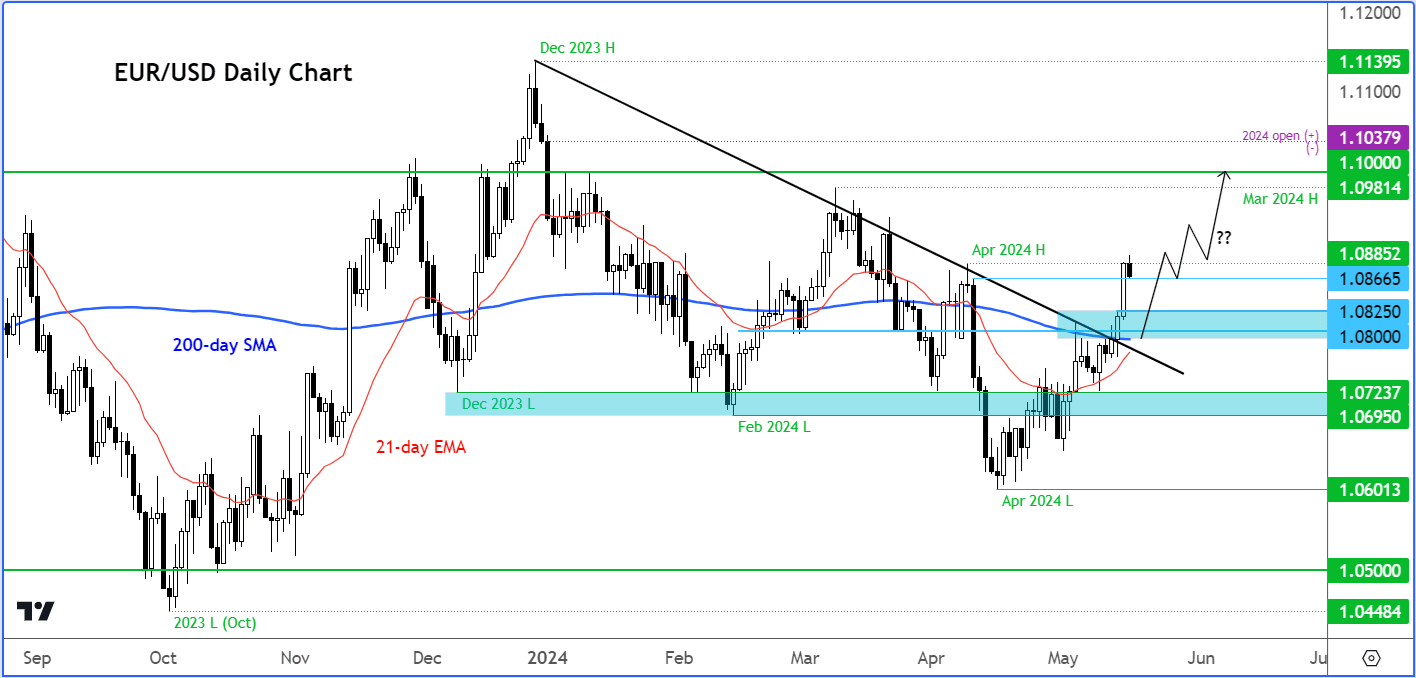Euro-Dollar On Course for 1.10 says City Index Analyst
- Written by: Fawad Razaqzada, analyst at City Index
-

Image © European Commission Audiovisual Services
Unsurprisingly, the EUR/USD has fallen back amid profit-taking after Wednesday’s data-driven rally. But with several key resistance levels broken, the path of least resistance remains to the upside.
The first short-term potential support level to watch is around 1.0850-1.0860, an area which failed to offer resistance during Wednesday’s melt up, despite it being a prior support zone.
Now that we have broken above here, we could well see a potential bounce around this area, which was being tested at the time of writing.
Further lower, the key support to watch is now between 1.0800 to 1.0825 area, which marks the point of origin of this week’s breakout.
On the upside, 1.0900 is likely to be the next bullish target ahead of the key 1.10 handle thereafter.
Image courtesy of Fawad Razaqzada @ City Index. Track EUR/USD with your own custom rate alerts. Set Up Here
What now for the dollar? That’s the key question after Wednesday’s softer data releases caused the greenback to fall across the board, underscoring the view that economic growth is losing momentum and that inflation is heading lower.
The dollar bears, and the EUR/USD bulls, will be looking for more evidence of a cooling US economy, especially the labour market.
Market expectations have shifted to anticipate two rate cuts this year for the first time in a month, although three cuts could be a possibility should the recent trend of weaker US data continue.
There are no major US macro pointers scheduled until the final day of the month when core PCE is released, a week before the May jobs report comes out. Until then, I would expect to see some further dollar selling but at a more gradual pace.
So, I reckon the EUR/USD is going to find buyers on the dips and edge towards the 1.10 handle.
Recent weakness in US data has inspired traders to sell into the dollar’s recovery attempts.
Wednesday’s CPI print missed expectations with a +0.3% m/m reading, and we also saw a flat headline retail sales figure, when a 0.4% increase was expected. What’s more, the Empire State Manufacturing Index painted another gloomy picture for the manufacturing sector, with yet another below-forecast negative reading (-15.6 vs. -9.9 expected).
Wednesday’s disappointing data comes after the April non-farm jobs report, the latest ISM surveys and several other pointers, all disappointed expectations earlier this month.
So, it looks like the US economic recovery is slowing, and this will help bring inflation down, reducing the need to keep monetary policy tight for an extended period of time. The Fed’s tapering of its balance sheet runoff has been an additional bearish factor for the dollar.











